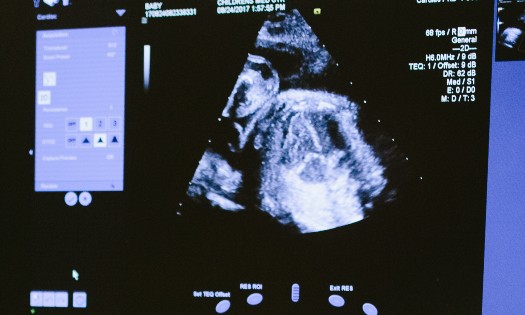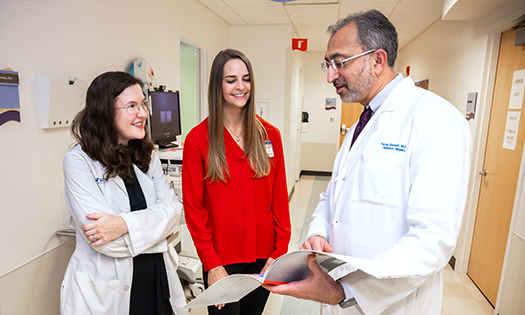In this Q&A, Dr. Zia discusses the FUVID study and how it’s being used to develop new treatments for children with functional limitations after pulmonary embolisms.
Hospitalized children, teens and young adults are developing blood clots at increasing rates. Pulmonary embolism (PE) in teens in particular has surged 200% during the past decade, and complications from PE – such as shortness of breath and exercise intolerance – are likewise soaring. Because these complications can last a lifetime, many teen and young adult patients may live with them for years.
Ayesha Noor Zia, M.D., Pediatric Hematologist/Oncologist at Children’s Medical Center Dallas, part of Children’s Health℠, and Associate Professor at UT Southwestern, is leading research into the mechanisms of PE complications. As the principal investigator, she designed the study with key collaborators to pinpoint the causes of these complications as a step toward developing therapies to treat or even prevent them. In this Q&A, Dr. Zia answers questions about this first-of-its-kind, multisite study sponsored by NIH.
What is the FUVID study and why is it important?
The FUVID study (Functional Characterization of Children with Chronic Venous Thromboembolic Disease) is investigating why some children develop functional limitations after having a PE, also called post-PE syndrome. The current thinking in the field is that these complications result from obesity and/or deconditioning alone – but we challenge this line of thinking. Our hypothesis is that participants may have targetable physiological limitations or exercise-associated abnormalities directly caused by PE.
Pediatric post-PE syndrome is an untapped area for research, and my research program is the first to focus on this area. Our study includes some innovative elements:
A focus on children without comorbidities: We’re specifically targeting previously healthy children who developed PE and complications. The study excludes children with comorbidities because they can cause symptoms similar to post-PE syndrome, making it difficult to determine whether PE or the comorbidity is causing the symptoms. What we find will also help children with associated morbidities. We expect these complications to occur at a higher rate in them, with PE causing new or exacerbating existing functional limitations.
One testing site for consistent data gathering: Participants have their first visit at their enrollment site. Then we bring participants to Dallas twice to undergo comprehensive exercise assessments. This approach ensures consistent and rigorous data because every participant goes through the same testing.
Assessment at three levels of activity: We test participants at rest, at submaximal exercise (which simulates activities of daily living) and at peak (maximal) exercise. We’re evaluating participants at each activity level to examine the symptoms that occur at various intensities. Children may not have symptoms at rest. So testing at multiple levels will ensure that we understand what happens when they try to be physically active but stop because they cannot.
How does the FUVID study work?
Patients must meet certain eligibility criteria to enroll. The three main requirements are:
Age of 8 to 21 years
Diagnosis of PE within the past 60 days
No major medical problems that require a doctor’s care or emergency room visits
Eligible patients can enroll in one of the study’s 30+ active sites across the country, including right here in Dallas with our team. The study involves three visits over about one year:
Visit 1: Participants provide clinical and demographic information and blood samples for lab testing at their enrollment site.
Visit 2: Our team arranges travel to Children’s Medical Center Dallas where participants will undergo three days of exercise tests, MRI and blood tests. Visit 2 takes place two to three months after Visit 1.
Visit 3: This is another three-day visit to Dallas with the same testing. This visit takes place nine to 10 months after Visit 2.
What outcomes have you seen so far?
The data so far show that about 25% of patients have evidence of exercise intolerance because of an array of heart, lung or skeletal muscle-related physiological limitations and deconditioning. We’re planning to test appropriate interventions for these issues in the next phase, which will be a randomized control trial.
What’s on the horizon for this research?
We expect to find the causes of post-PE syndrome so that we can target treatments for them, whether they’re lung, heart or muscle issues. Post-PE syndrome results in a loss of approximately 1 to 2 years of healthy life and disability comparable to heart failure and stroke in adults. We want to prevent these complications in children with PE.
Our next step is a trial to develop treatments that patients could start as early as possible, while they’re undergoing treatment for PE. Early treatment can help improve our patients’ functional status and quality of life and possibly prevent post-PE syndrome. Another area of emphasis will be to understand how obesity affects post-PE syndrome.
How is Children’s Health advancing care for children who have blood clots?
The Pauline Allen Gill Center for Cancer and Blood Disorders at Children’s Health is a national leader in research that aims to solve some of the most complex challenges for children who have bleeding disorders and thrombosis. Our multispecialty team at Children’s Health and UT Southwestern includes world-renowned experts in hematology, cardiology, pulmonology, exercise science and advanced imaging.
Because of this expertise, my research program has received support for the FUVID study from NIH’s National Heart, Lung, and Blood Institute and the American Heart Association. Pediatric blood clots and their complications are areas of interest to these organizations, and their support helps us improve children’s lives.
You can also email us with your questions.


